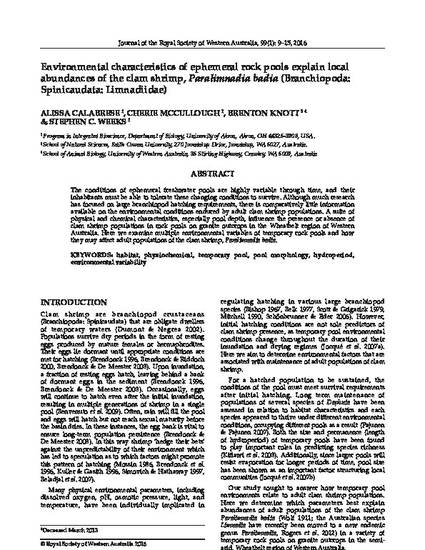
Article
Environmental characteristics of ephemeral rock pools explain local abundances of the clam shrimp, Paralimnadia badia (Branchiopoda: Spinicaudata: Limnadiidae)
Journal of the Royal Society of Western Australia
(2016)
Abstract
The conditions of ephemeral freshwater pools are highly variable through time, and their inhabitants must be able to tolerate these changing conditions to survive. Although much research has focused on large branchiopod hatching requirements, there is comparatively little information available on the environmental conditions endured by adult clam shrimp populations. A suite of physical and chemical characteristics, especially pool depth, influence the presence or absence of clam shrimp populations in rock pools on granite outcrops in the Wheatbelt region of Western Australia. Here we examine multiple environmental variables of temporary rock pools and how they may affect adult populations of the clam shrimp, Paralimnadia badia.
Keywords
- habitat,
- physiochemical,
- temporary pool,
- pool morphology,
- hydroperiod,
- environmental variability
Disciplines
Publication Date
Winter January 1, 2016
Citation Information
Alissa Calabrese, Cherie McCullough, Brenton Knott and Stephen C. Weeks. "Environmental characteristics of ephemeral rock pools explain local abundances of the clam shrimp, Paralimnadia badia (Branchiopoda: Spinicaudata: Limnadiidae)" Journal of the Royal Society of Western Australia Vol. 99 Iss. 1 (2016) p. 9 - 15 Available at: http://works.bepress.com/stephen_weeks/14/
